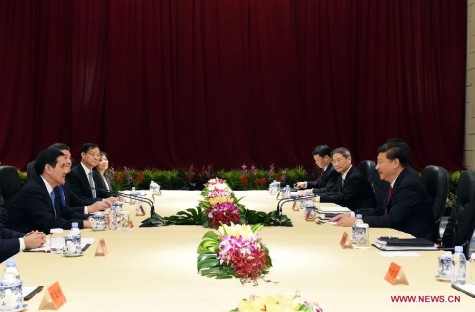
On November 7, President Xi Jinping of the People’s Republic of China (PRC, or commonly referred to as “China”) and President Ma Ying-jeou of the Republic of China (ROC, or commonly referred to as “Taiwan”) held a historic meeting in Singapore.[1]
The meeting was historic in the sense that there had not been a leader-level meeting between the two sides for 66 years.
In order to understand the reasons for this 66 year gap, one has to take a look at the history between the Chinese and Taiwanese people (who are predominantly of Chinese descent).[2]
Background of the 66 Year Gap
In 1949, Chinese Nationalists (also known as the Kuomintang) led by Chiang Kai-shek lost control of mainland China to the Chinese Communists led by Mao Zedong. The Chinese Communists emerged victorious from the Chinese Civil War, and succeeded to establish the People’s Republic of China (PRC). Meanwhile, Chinese Nationalists were forced to relocate themselves and their families to the island of Taiwan off the coast of mainland China. Thus, the regime set up by the Chinese Nationalists, the Republic of China (ROC), continued to exist only on the island of Taiwan. The ROC continued to enjoy international recognition as “China” until 1971, when rapprochement between the United States and the Communist regime in mainland China turned the political climate in favor of PRC; meaning ROC lost its UN membership and status as “China” to PRC. Today, ROC, or commonly referred to as “Taiwan”, is recognized only by 21 UN member countries. It maintains economic and cultural missions that serve as representations in countries with which it does not have official diplomatic relations.
In the 66 years since the end of the civil war, PRC has evolved into a single party (communist) regime with an increasing number of free market practices. Meanwhile, ROC has evolved into a democratic, semi-presidential regime with a full-fledged free market economy. The asymmetry between the two sides is not only about their mode of governance. There is also an extreme asymmetry in terms of size and capacity. PRC, with a population of roughly 1.4 billion people, is a major power on the path towards superpower status. Its economy as well as its military expenditure is second largest in the world. Meanwhile, ROC is one of the Four Asian Tigers. Although it has developed a solid national infrastructure, a high-tech industry, advanced human capital, ROC is a relatively small country with a population of 23 million people. ROC simply cannot compete with the political weight, and economic and military capacity of PRC. However, its strategic, political, and economic value means that it enjoys the support of the United States, the current superpower of the world, which is currently engaged in a competition with PRC for political and economic influence around the world, especially in the Pacific region.
Both PRC and ROC claim sovereignty over each other, which inevitably leads to tensions between the two sides. Although the PRC is internationally recognized as China, the PRC regime has actually never exercised control over the ROC regime in Taiwan. As such, despite what both sides across the Taiwan Strait may claim, PRC and ROC have behaved -despite their common past, culture, and language- as two separate countries for decades now. Although both sides are Chinese, the people of Taiwan have -over the past 66 years- developed cultural idiosyncrasies in comparison to those in mainland China, leading to various responses from people when asked how they culturally identify themselves as (Taiwanese or Chinese, or something in between).
Institutionalizing Cross Strait Relations
The relations between the two sides remained tense (sometimes highly tense) until 1987, when martial law was lifted in ROC and people in Taiwan were allowed to visit their relatives across the Taiwan Strait in mainland China under PRC rule. This lead to a breakthrough in relations between the two sides. Both sides opened their respective organizations and agencies to handle relations with the other side. PRC established the Association for Relations across the Taiwan Straits (ARATS - the organization that handles the relations with the other side)[3] and Taiwan Affairs Office of the State Council (or simply Taiwan Affairs Office - the government agency responsible for forming policies with regards to the other side)[4]. In the same vein, ROC established the Straits Exchange Foundation (SEF - the organization that handles the relations)[5] and Mainland Affairs Council (MAC - the government agency responsible for forming the policies)[6]. With the thawing of relations, the two sides were able to come to the “1992 Consensus” of “One China, with respective interpretations”. This basically means that both sides agree that there is only one China, but agree to disagree on what China exactly means. This allows both sides to reject each other’s claim to sovereignty, but accept the reality that they each govern their side of China.
From this point onwards, the two sides began work on institutionalizing their relations. Beginning in 1993, steering clear of thorny political issues, the two sides began to sign agreements related to economic and administrative cooperation that would benefit both sides. Cross strait relations have improved significantly since 2008 due to the flexibility and constructive approach exhibited by both sides’ decision makers. Up until now, 23 agreements have been signed between the two sides. These agreements cover areas such as mutual tourist visits, transportation, prevention of double taxation, joint crime fighting, natural disaster preparation, and even a preferential trade pact. These agreements have proven mutually beneficial; for example tourist and student exchanges, and also trade between the sides have skyrocketed. Up until the meeting between the two sides’ presidents, the cooperation between sides had reached to such an extent that the heads of Taiwan Affairs Office and MAC were able to meet and address each other with their official titles.
Despite this positive outlook, there is inevitably a lingering tension between the two sides. Maintaining that it is China, PRC makes it clear that Taiwan belongs to it, and that therefore the two sides must eventually unite. The PRC blocks ROC’s membership to international organizations that require statehood status. It does not look kindly at talks of independence in Taiwanese society, and has even enacted a law that outlaws ROC’s independence. It has also stated that it will resort to military intervention should ROC go ahead with any sort of independence, a threat that both ROC and the international community know is not a bluff.
ROC is uncomfortable with PRC’s stance on unification. It seeks to maintain the current status quo, whereby it can exist alongside PRC in current atmosphere of peace and cooperation. It insists on its three “no’s” regarding this issue; which are “no unification”, “no independence”, and “no use of force”. ROC’s stance is a reflection of Taiwanese society’s attitude towards PRC and cross strait relations. ROC government regularly conducts polls to find out about Taiwanese society’s current attitudes regarding the issue at hand. The latest poll[7] suggests that 86.1% of Taiwanese people prefer some sort of status quo, while only 4% want independence and only 2.3% want unification. Despite all the positive atmosphere of the recent years, polls also suggest that half of the people still believe that PRC is hostile to the ROC regime and the Taiwanese people. PRC’s size and mode of governance raises fears amongst Taiwanese society that a unification would mean the complete absorption and disappearance of Taiwan into PRC’s China, and the loss of a democratic way of life achieved under ROC.
2016 General Elections in ROC and Motivating Factors for the Singapore Meeting
The November 7 Singapore meeting was marketed by the leadership of both sides as the logical result of the level of cooperation between the two sides. It was indicated in advance that no agreements would be signed and no joint statements would be issued. The meeting would instead be about consolidating cross strait relations and cooperation at the top level with a meeting of the highest officials of both sides. Reflecting the sensitivity of the situation, during the meeting, Presidents Xi and Ma did not address each other with their respective titles, but only with their names.[8]
Both sides have reported that the meeting was conducted in a friendly atmosphere and with a constructive approach.[9] It has been reported that[10] the following points were discussed in during the meeting; 1) “consolidation of the 1992 Consensus and the maintenance of peace across the Taiwan Strait”, 2) “reduction of hostility and peaceful handling of disputes”, 3) “expansion of cross-strait exchanges and mutual benefits”, 4) “establishment of a cross-strait hotline” (between the heads of Taiwan Affairs Office and MAC), and 5) “joint cooperation for cross-strait prosperity”. Individually, while Xi indicated to Ma that both sides are “one family”, Ma indicated to Xi that “both sides should respect each other’s values and way of life”.[11]
The Singapore meeting comes at a time when general elections in Taiwan are only two months away. Many international and Taiwanese news sources have argued that the Singapore meeting has something to do with the elections.[12] It is being predicted that the Tsai Ing-wen, presidential candidate of the Democratic Progressive Party (DPP) will beat Kuomintang’s candidate Eric Chu. It is even possible that Kuomintang will lose its parliamentary majority to DPP. DPP is critical of Kuomintang’s handling of cross strait relations with PRC, arguing that it is behaving too closely with the PRC and risking ROC’s sovereignty. Since DPP is PRC-sceptic and leans more towards Taiwan’s independence, the election DPP candidate as president would inevitably change the character of PRC-ROC relations, which could signal an ominous future. DPP candidate Tsai, however, has pledged that she will maintain the status quo if elected,[13] so it would be premature at this point to state that a serious shift in PRC-ROC relations would occur if she is elected.
Within such a context, President Ma’s meeting with President Xi could be construed as an attempt by Ma to show Taiwanese voters that his party, the Kuomintang, is handling relations with the PRC rather well by creating a win-win scenario, that good relations with PRC ensure the continuation of peace and prosperity for the Taiwanese people, and that Kuomintang’s conduct in the cross strait relations ensures the status quo of ROC.
Having good relations with PRC is also vitally important ROC in the sense that this opens opportunities for ROC to engage in international cooperation and to be a member in more international organizations (since PRC usually scuttles ROC’s chances to be a member in such organizations or limits its participation). For example, the “One Belt One Road” project as proposed by PRC aims to connect the entire Eurasian continent with a series of land and sea routes and the accompanying infrastructure. Such a project, if realized, would be of tremendous economic importance to all countries in Eurasia. Having good relations with PRC would enable ROC to reap the economic benefits of such a project alongside everyone else.
For the PRC, the Singapore meeting could be construed as an attempt to show both Taiwanese people and the international community that it has the capacity and desire to pursue friendly foreign relations. The PRC is currently locked into a heated dispute with a number of countries –including ROC and the United States- over South China Sea. The South China Sea is extremely rich in terms of both natural gas and oil, and is also a critical sea transportation route for the world. The PRC claims a large part of this territory as its own, which conflicts with the claims of ROC and other countries adjacent to this territory. The PRC takes a tough stance regarding its claims, backing them with its growing military power. There have even reports of it artificially expanding tiny islands in the region and militarizing them.[14] In this respect, PRC is under pressure from the United States, which stresses that the territory claimed by PRC constitutes international waters and so has the right to use this territory for navigation regardless of PRC’s warnings and protests. In fact, a US intelligence plane and also a warship have recently passed through a territory claimed by PRC, which naturally provoked a stern reaction from PRC.[15]
Having good relations with ROC that is nearby to this disputed region of critical importance gives PRC a good chance to showcase its successful foreign policy. Averting potential accusations that it is attempting to meddle in Taiwanese elections, PRC has specifically indicated that it will not interfere in the 2016 general elections in ROC.[16] It did, however, indicate that it welcomes “all parties and individuals that oppose Taiwan independence, adhere to the ‘1992 Consensus’, and believe in peaceful development of cross-Strait ties”. With the Singapore meeting, PRC could be seeking to drive across the message that it is friendly towards Taiwanese people and that there is no reason to panic about the increasingly close relations between PRC and ROC. In its dealings with ROC, PRC must walk a fine line; it must not be seen as being too soft and thus legitimizing the ROC (which could risk a backlash from the Chinese public), but it must also not be too tough and thereby spook the Taiwanese public - since this could push them further towards seeking independence.[17] A ROC that openly seeks independence would a major headache for PRC. In such a case, due to its own state doctrine, PRC would be forced to militarily intervene (it certainly has the capacity to do so) in Taiwan, but doing so would risk international backlash and possibly induce countries in the region to band against it. As such, PRC will most likely utilize peaceful means to ensure that ROC does not enter a path towards formal independence. Doing so would allay the fears of the countries in the region about PRC’s intentions and prevent the US from building up more influence by capitalizing on countries’ anti-PRC stance.
No matter how one looks at it, the meeting between President Xi of PRC and President Ma of ROC in Singapore was historic. The leaders of two peoples separated 66 years ago due to war and politics were able to overcome historical grudges, fears, and sensitivities and to come together to talk about future prospects in a mature, constructive, and peaceful manner. This will promote a win-win scenario that contributes to solving the dispute between the sides and staving off the risk of armed conflict that could a have a destabilizing effect for East Asia and beyond.
* Photo: Xinhuanet.com
[1] “China and Taiwan leaders hail historic talks”, BBC, http://www.bbc.com/news/world-asia-34742680
[2] Taiwan has a small percentage of indigenous people, making Taiwanese people with Chinese ancestry the overwhelming majority of the country.
[3] Association for Relations across the Taiwan Straits website: http://www.arats.com.cn/. ARATS’ website, unfortunately, does not have an English-language section.
[4] Taiwan Affairs Office of the State Council PRC website: http://www.gwytb.gov.cn/en/
[5] Straits Exchange Foundation website: http://www.sef.org.tw/mp.asp?mp=300
[6] Mainland Affairs Council website: http://www.mac.gov.tw/mp.asp?mp=3
[7] Public poll: “Public Opinion on Cross-Strait Relations in the Republic China”, Mainland Affairs Council, Executive Yuan, Republic of China (Taiwan), July 2015.
[8] “Rivals China, Taiwan to hold surprise meeting weeks before island's elections”, Reuters, http://www.reuters.com/article/2015/11/04/us-taiwan-china-meeting-idUSKCN0SS2M220151104#Yfc6qsXHlPvsOug0.97
[9] “Xi-Ma meeting turns historic page in cross-Strait relations: official”, Xinhuanet, http://news.xinhuanet.com/english/2015-11/09/c_134795583.htm. Also see; “Opening remarks by President Ma Ying-jeou at an international press conference following his meeting with mainland Chinese leader Xi Jinping”, Foreign Press Liaison Office, Ministry of Foreign Affairs, Republic of China (Taiwan), Press Release, November 8, 2015.
[10] “Opening remarks by President Ma Ying-jeou at an international press conference…”
[11] “China and Taiwan leaders hail historic talks”
[12] “Taiwan and China to hold historic summit in Singapore”, BBC, http://www.bbc.com/news/world-asia-china-34711923. Also see; “Rivals China, Taiwan to hold surprise meeting weeks before island's elections”
[13] “5 things you should know about Taiwan’s upcoming election”, Washington Post, https://www.washingtonpost.com/blogs/monkey-cage/wp/2015/09/25/5-things-you-should-know-about-taiwans-upcoming-election/
[14] “China says US warship's Spratly islands passage 'illegal'”, BBC, http://www.bbc.com/news/world-asia-china-34647651
[15] “Exclusive: China warns U.S. surveillance plane”, CNN, http://edition.cnn.com/2015/05/20/politics/south-china-sea-navy-flight/. Also see; “China says US warship's Spratly islands passage 'illegal'”
[16] “Chinese mainland reiterates no interference in Taiwan election”, Taiwan Affairs Office, http://www.gwytb.gov.cn/en/Headline/201506/t20150625_10108936.htm
[17] “China and Taiwan's historic meeting, explained”, Vox.com, http://www.vox.com/2015/11/4/9669592/china-taiwan-meeting
© 2009-2025 Center for Eurasian Studies (AVİM) All Rights Reserved
No comments yet.
-
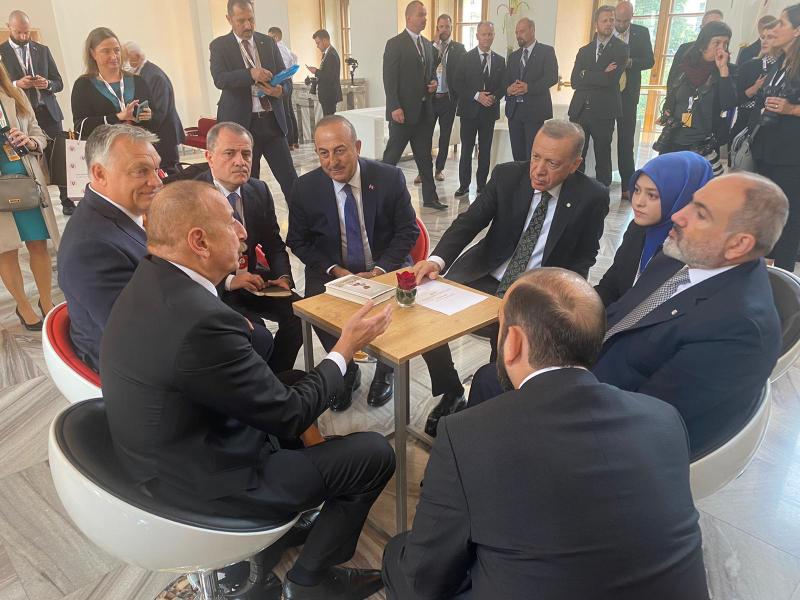 AZERBAIJAN-ARMENIA PEACE TREATY PROCESS AND ATTEMPTS TO UNDERMINE TÜRKİYE-AZERBAIJAN RELATIONS - II
AZERBAIJAN-ARMENIA PEACE TREATY PROCESS AND ATTEMPTS TO UNDERMINE TÜRKİYE-AZERBAIJAN RELATIONS - II
Mehmet Oğuzhan TULUN 21.11.2025 -
 HISTORIC MEETING BETWEEN PRESIDENT XI OF PRC AND PRESIDENT MA OF ROC TAKES PLACE IN SINGAPORE
HISTORIC MEETING BETWEEN PRESIDENT XI OF PRC AND PRESIDENT MA OF ROC TAKES PLACE IN SINGAPORE
Mehmet Oğuzhan TULUN 09.11.2015 -
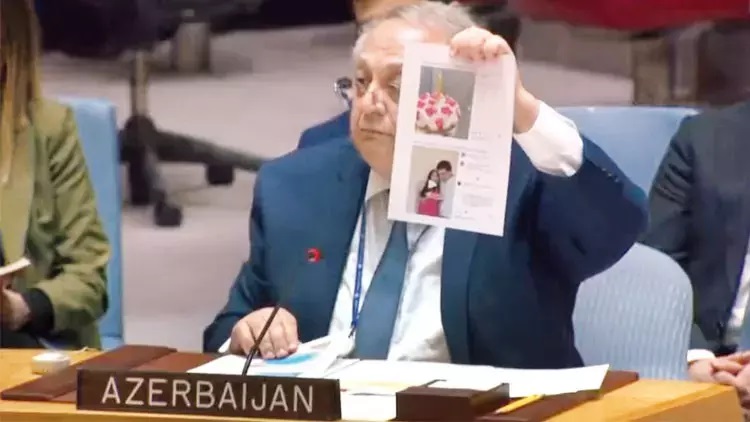 DISCUSSIONS ON KARABAKH AT THE UNSC AND ITS REPERCUSSIONS IN SOME CIRCLES
DISCUSSIONS ON KARABAKH AT THE UNSC AND ITS REPERCUSSIONS IN SOME CIRCLES
Mehmet Oğuzhan TULUN 21.09.2023 -
 ANTI-TURKEY AND ANTI-TURKISH VIEWS EXPRESSED AT A CONFERENCE ORGANIZED BY THE LSE TURKISH CHAIR
ANTI-TURKEY AND ANTI-TURKISH VIEWS EXPRESSED AT A CONFERENCE ORGANIZED BY THE LSE TURKISH CHAIR
Mehmet Oğuzhan TULUN 28.05.2015 -
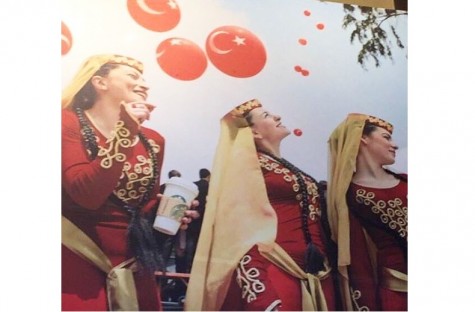 STARBUCKS SUCCUMBS TO IGNORANT ANTI-TURKISH PROPAGANDA - II
STARBUCKS SUCCUMBS TO IGNORANT ANTI-TURKISH PROPAGANDA - II
Mehmet Oğuzhan TULUN 22.02.2015
-
 NSU CASE COVERED UP AND LEGALLY CLOSED: IS IT POSSIBLE TO AVOID SOCIAL AND POLITICAL REPERCUSSIONS?
NSU CASE COVERED UP AND LEGALLY CLOSED: IS IT POSSIBLE TO AVOID SOCIAL AND POLITICAL REPERCUSSIONS?
Teoman Ertuğrul TULUN 20.12.2021 -
RIGHTS OF THE CHRISTIANS IN TURKEY AND THE US CONGRESS
Ömer Engin LÜTEM 20.06.2011 -
 THE EU'S REFUGEE POLICY IN LIGHT OF VON DER LEYEN'S VISIT TO EGYPT AND THE CASE OF RWANDA
THE EU'S REFUGEE POLICY IN LIGHT OF VON DER LEYEN'S VISIT TO EGYPT AND THE CASE OF RWANDA
Selenay Erva YALÇIN 10.07.2024 -
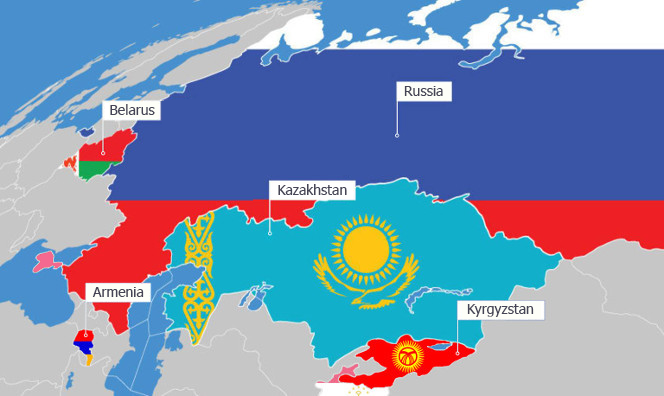 ARMENIA’S “BALANCE POLICY”
ARMENIA’S “BALANCE POLICY”
Hazel ÇAĞAN ELBİR 17.04.2017 -
 INTRODUCING RELIGION INTO A LEGAL AND HISTORICAL DISPUTE
INTRODUCING RELIGION INTO A LEGAL AND HISTORICAL DISPUTE
Mehmet Oğuzhan TULUN 12.04.2015
-
25.01.2016
THE ARMENIAN QUESTION - BASIC KNOWLEDGE AND DOCUMENTATION -
12.06.2024
THE TRUTH WILL OUT -
27.03.2023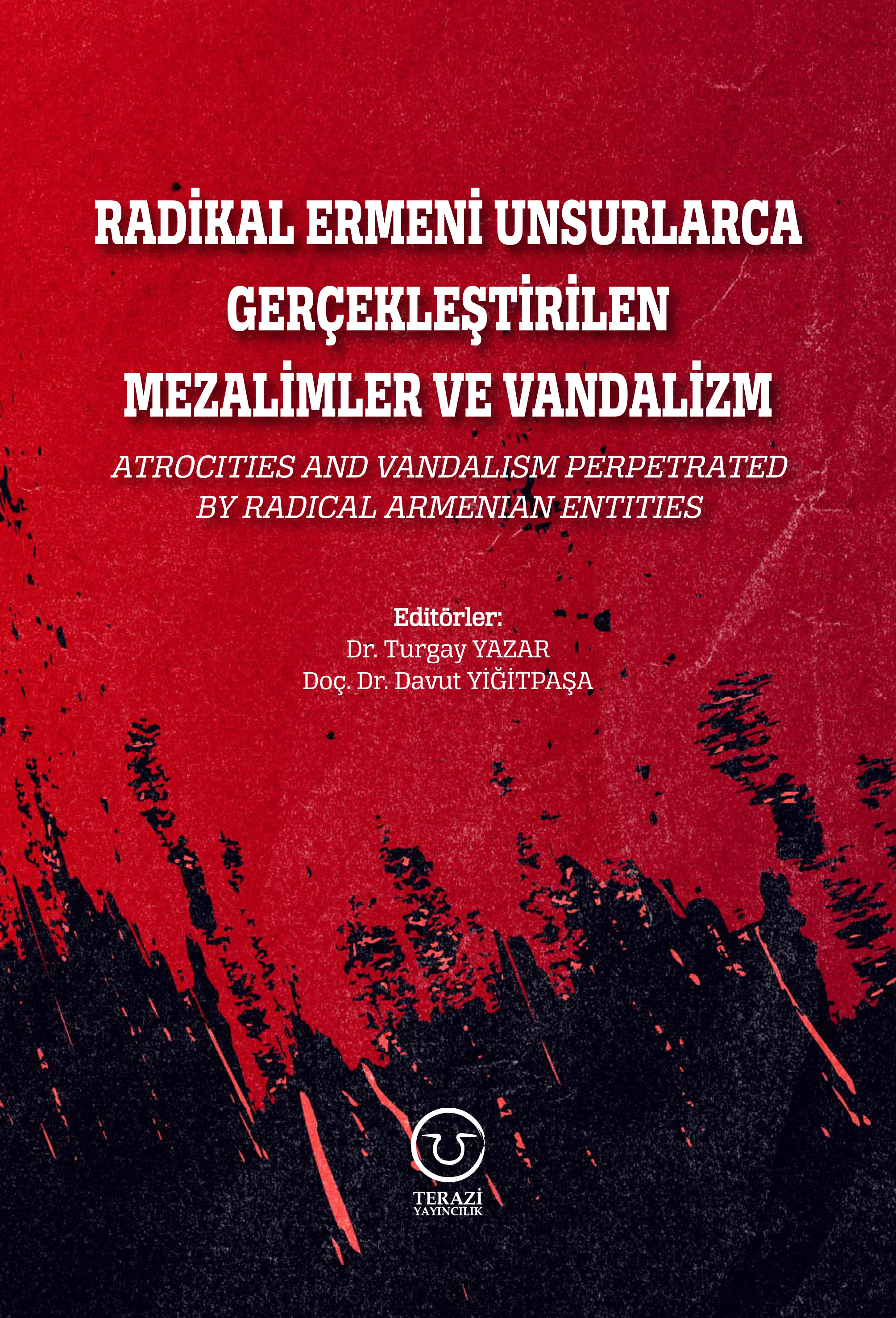
RADİKAL ERMENİ UNSURLARCA GERÇEKLEŞTİRİLEN MEZALİMLER VE VANDALİZM -
17.03.2023
PATRIOTISM PERVERTED -
23.02.2023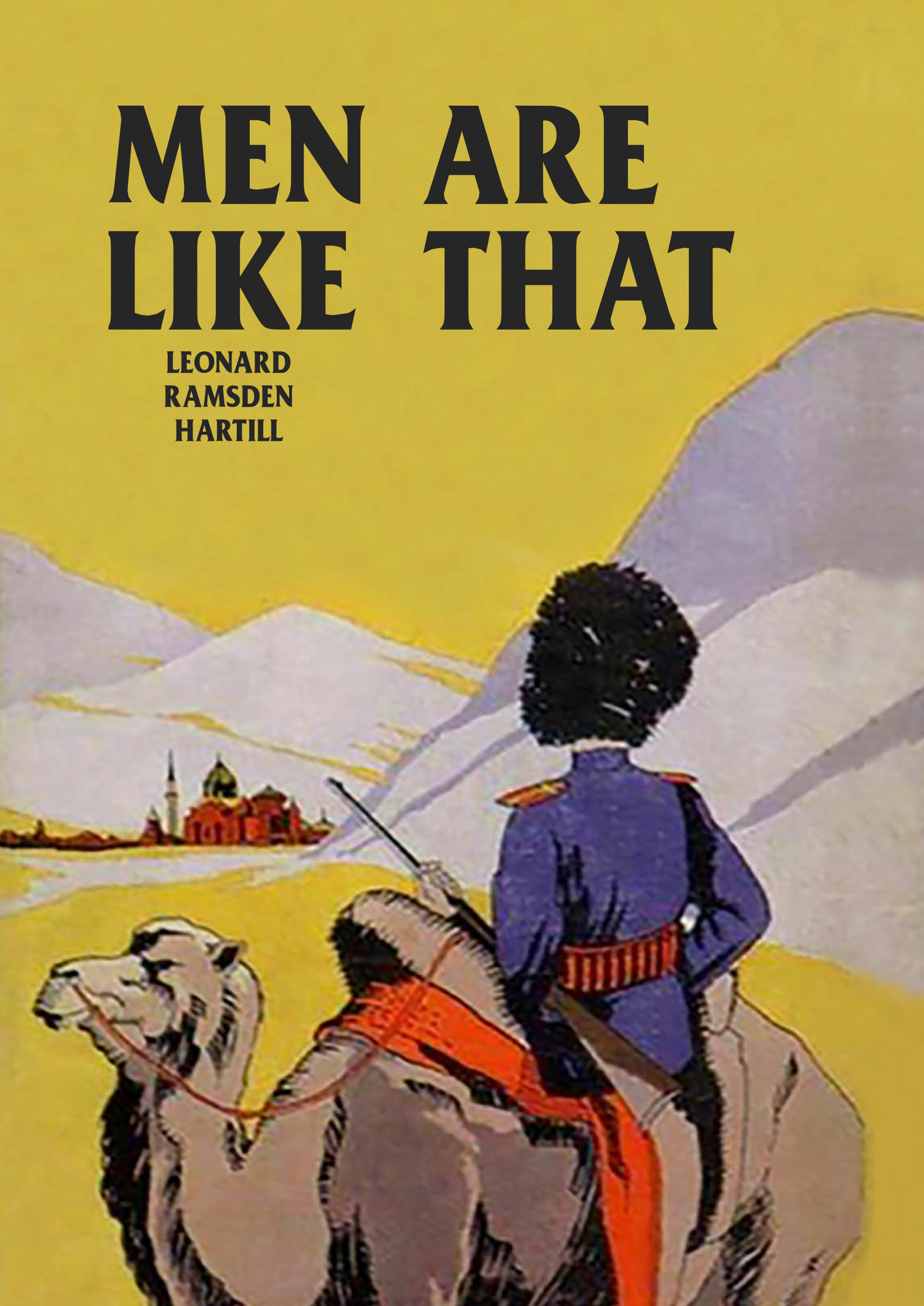
MEN ARE LIKE THAT -
03.02.2023
BAKÜ-TİFLİS-CEYHAN BORU HATTININ YAŞANAN TARİHİ -
16.12.2022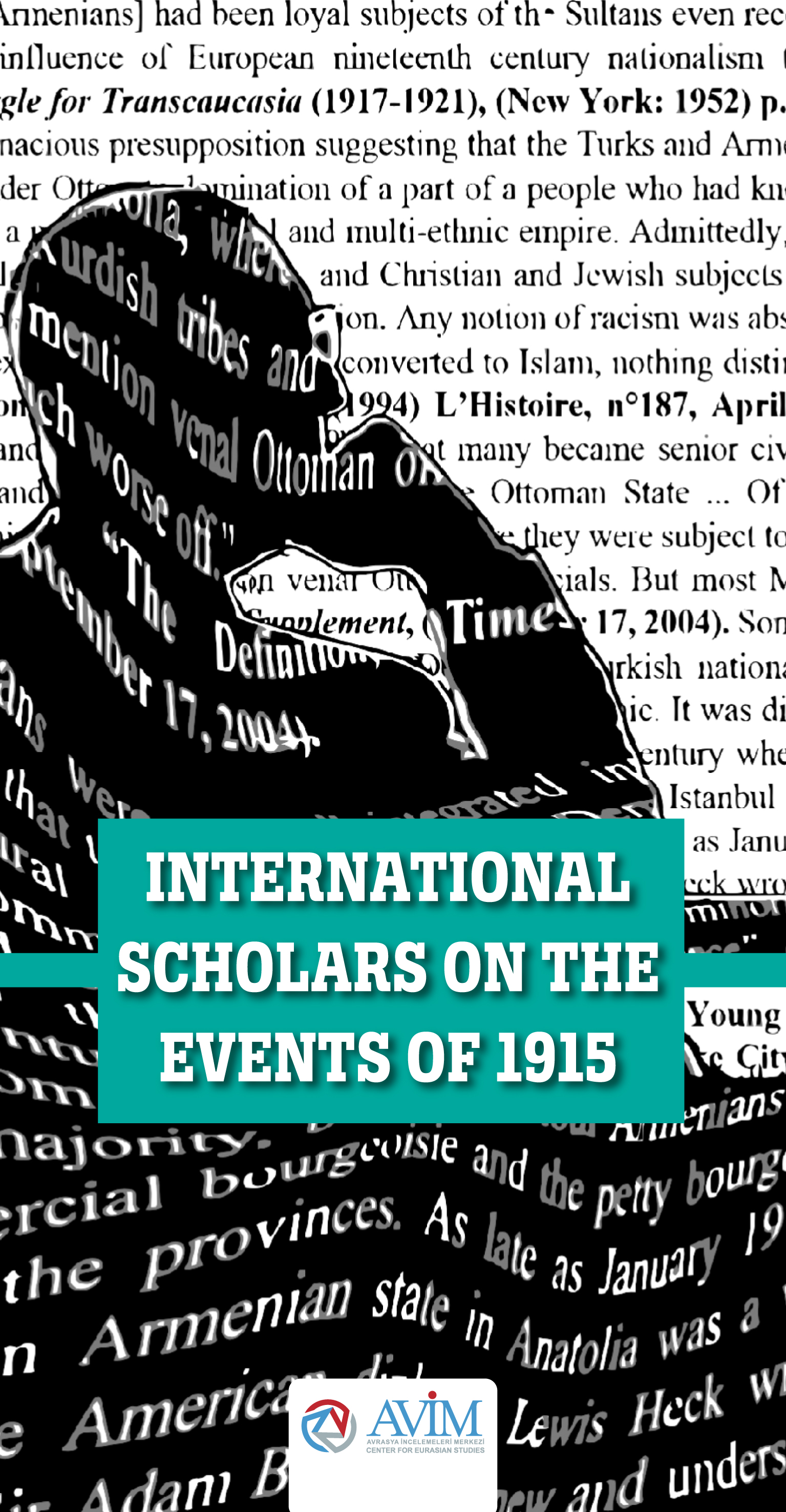
INTERNATIONAL SCHOLARS ON THE EVENTS OF 1915 -
07.12.2022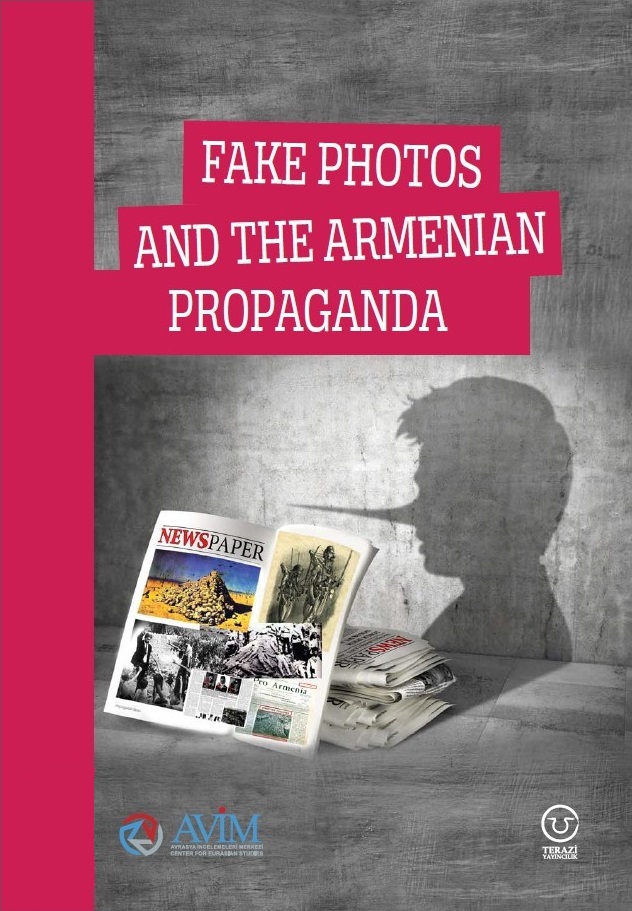
FAKE PHOTOS AND THE ARMENIAN PROPAGANDA -
07.12.2022
ERMENİ PROPAGANDASI VE SAHTE RESİMLER -
01.01.2022
A Letter From Japan - Strategically Mum: The Silence of the Armenians -
01.01.2022
Japonya'dan Bir Mektup - Stratejik Suskunluk: Ermenilerin Sessizliği -
03.06.2020
Anastas Mikoyan: Confessions of an Armenian Bolshevik -
08.04.2020
Sovyet Sonrası Ukrayna’da Devlet, Toplum ve Siyaset - Değişen Dinamikler, Dönüşen Kimlikler -
12.06.2018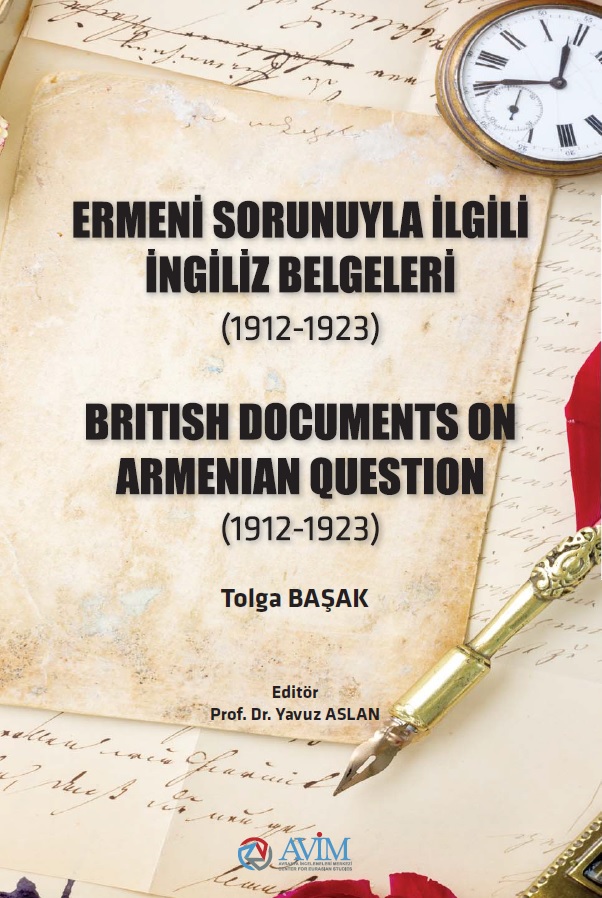
Ermeni Sorunuyla İlgili İngiliz Belgeleri (1912-1923) - British Documents on Armenian Question (1912-1923) -
02.12.2016
Turkish-Russian Academics: A Historical Study on the Caucasus -
01.07.2016
Gürcistan'daki Müslüman Topluluklar: Azınlık Hakları, Kimlik, Siyaset -
10.03.2016
Armenian Diaspora: Diaspora, State and the Imagination of the Republic of Armenia -
24.01.2016
ERMENİ SORUNU - TEMEL BİLGİ VE BELGELER (2. BASKI)
-
AVİM Conference Hall 24.01.2023
CONFERENCE TITLED “HUNGARY’S PERSPECTIVES ON THE TURKIC WORLD"









